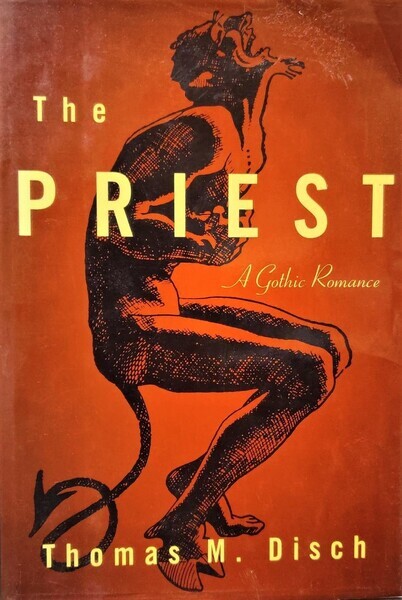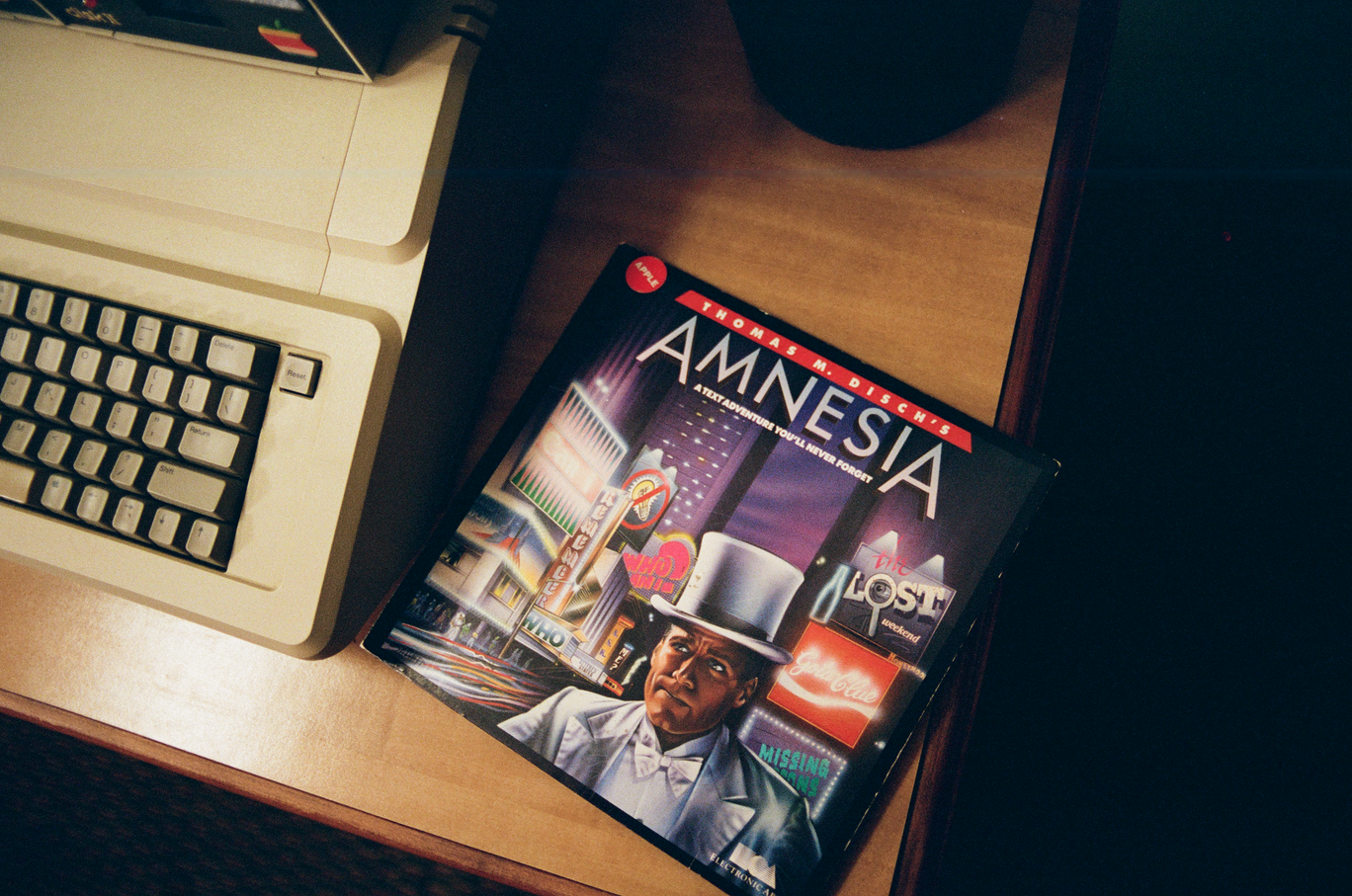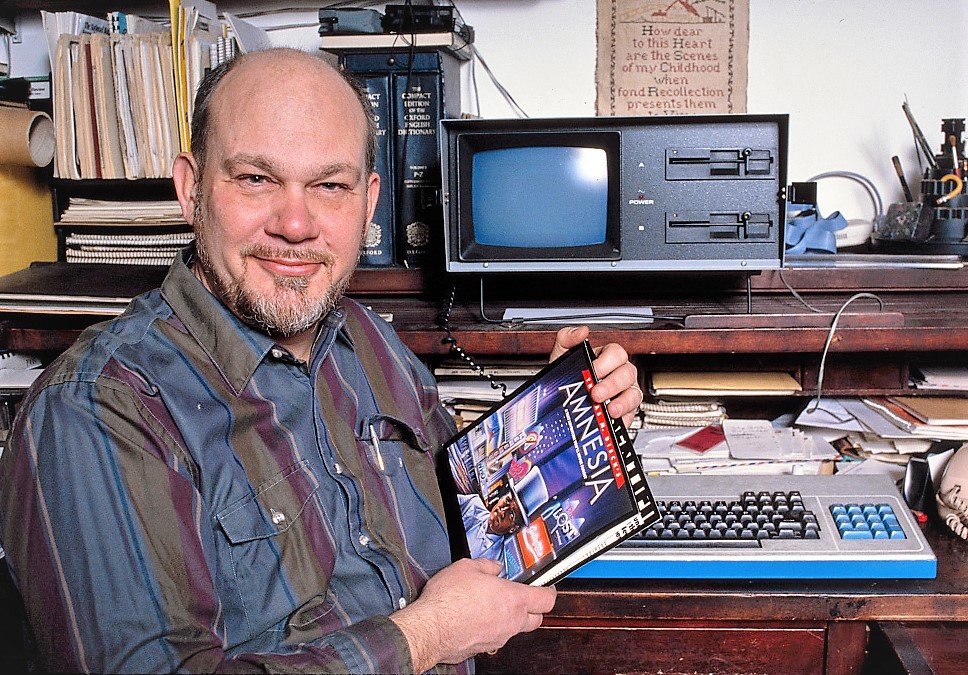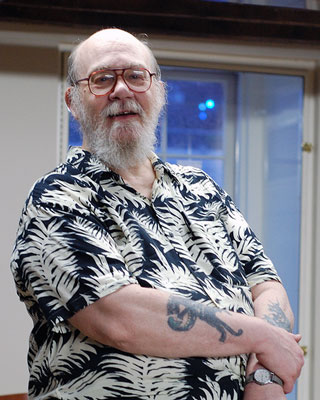Thomas M. Disch is known by many as the author of the satirical science fiction novel, On Wings of Song, (1979) and the beloved children’s book The Brave Little Toaster (1980), as well as 16 other novels, five novellas, eight story collections, four other children’s books, 12 poetry collections, four works of non-fiction, five anthologies, two plays, two audio works––and one computer game. It is that computer game, Amnesia, that continues to draw a large following of devoted gamers, media critics, and born-digital writers to Disch’s work. It was published by Electronic Arts in 1986 for the Apple IIe, Commodore 64, and IBM PC computers.
“Among the seminal interactive fiction titles . . . Amnesia is a tightly scripted game that not only features multiple (and often unexpected) scenarios and endings but also strong writing and character development of a good novel.”
Hamra Anzari, Adventure Classic Gaming
Disch was born in Iowa but spent some of his childhood in Minnesota. At 17 he moved to New York City and immersed himself in the arts. His love of this city is evident in the care he took to map it so precisely in Amnesia. During his lifetime, he served in the Army, worked odd jobs to survive, and eventually was able to make a living by his writing in his adopted city where he lived with his long-time partner, the poet Charles Naylor, until Naylor’s death in 2005. Disch died in 2008 at the age of 68, leaving behind a large body of work and one of the most famous commercially published computer games.
Critically Acclaimed
“American science fiction writer whose strange, dark worlds mixed horror and wit.”
— The Guardian
A writer “who twisted the inherently twisted genre of science fiction in new, disturbing directions.”
— The New York Times

The Priest (1994)

The New Improved Sun (1975)

The Man Who Had No Idea (1982)

Under Compulsion (1968)
Amnesia
The growing popularity of interactive media in the mid to late 1980s attracted famous print authors to try their hand in the new medium referred to as “bookware.” In 1984 Robert Pinsky published Mindwheel. That same year Douglas Adams and Steve Meretzky released The Hitchhiker’s Guide to the Galaxy.


Following the publication of The Businessman by Harper & Row that same year, Disch was approached by the company to produce a work of interactive media that would match its competition. However, the company pulled out of the contract, and Disch took it to CBS before it finally landed at Electronic Arts. It was published in 1986.
Explore the Original Manuscript & More
Total Amnesia: The Complete Text and Programming Notes of the World's Most Famous Lost Computer Game edited by Sarah Smith.
An edited volume of critical writing about Amnesia; essays about the history and production of the game; the making of the new contemporary version, Amnesia: Restored; and the original manuscript of Amnesia written by Thomas M. Disch.
For more information, contact Sarah Smith at sarahwriter@gmail.com

Special Thanks

Sarah Smith
A Boston-based writer known for the hypertext novel, King of Space (1991), Sarah Smith was instrumental in spurring the creation of Amnesia: Restored by connecting the lab to the Thomas M. Disch Estate.

Gregory Feeley
As the Literary Executor of the Thomas M. Disch Estate, he worked closely with the Electronic Literature Lab and students from the Creative Media & Digital Culture program at Washington State University Vancouver.
